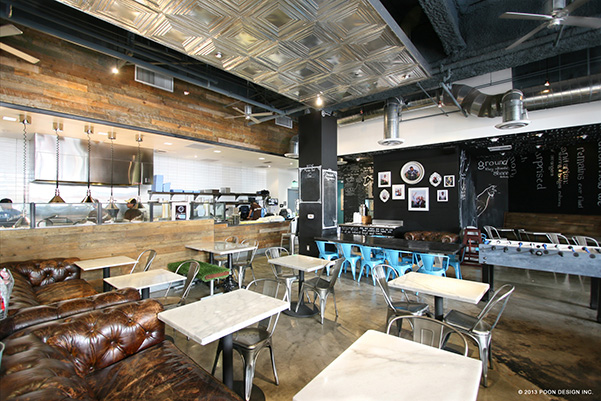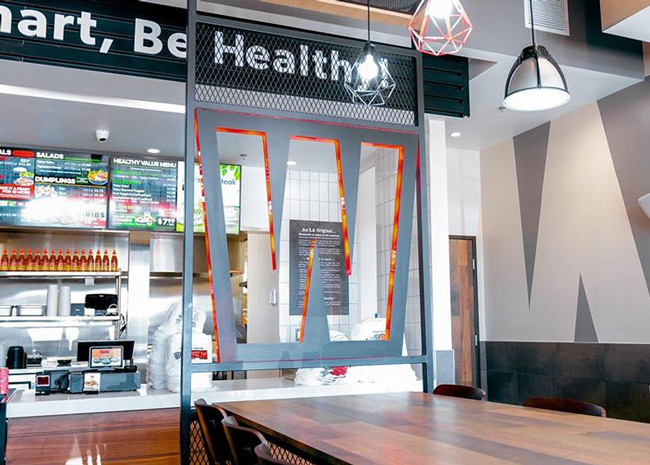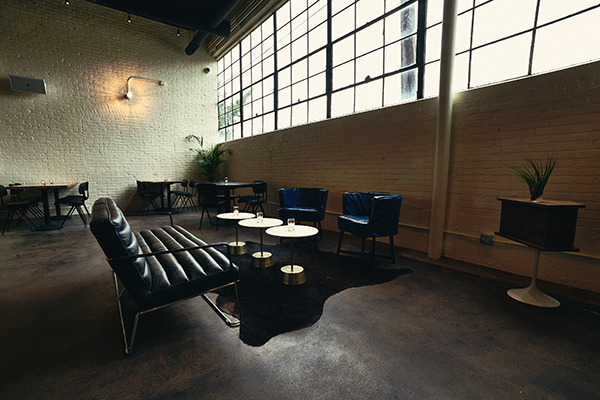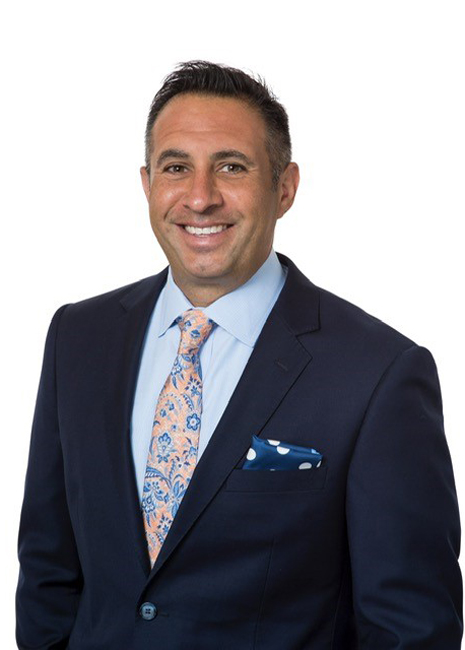 Eric Taylor, Vice President of Development, Tijuana Flats Eric Taylor came to Tijuana Flats with a diverse development background, having spent time at Sbarro, Boston Pizza, Rita’s Italian Ice and Metromedia Restaurant Group — former owner and operator of numerous restaurant brands like Bennigan’s, Steak and Ale, Bonanza and Ponderosa.
Eric Taylor, Vice President of Development, Tijuana Flats Eric Taylor came to Tijuana Flats with a diverse development background, having spent time at Sbarro, Boston Pizza, Rita’s Italian Ice and Metromedia Restaurant Group — former owner and operator of numerous restaurant brands like Bennigan’s, Steak and Ale, Bonanza and Ponderosa.
Taylor joined Tijuana Flats in December 2019, just a few months before COVID-19 hit America’s shores and upended the economy and our lives. At the time he was hired, Taylor’s task was to restart the 25-year-old chain’s franchise program and roll out a new prototype that was still in the conceptual stage.
Here, he recounts the wild ride that was 2020, Tijuana Flats’ new prototype and what the future holds for the chain’s development pipeline.
What brought you to Tijuana Flats?
ET: They recruited me in December 2019 in order to restart their franchise program and roll out their new prototype. I’ve been in the restaurant franchise world for 21 years now, and I’ve done domestic, international, pizza, quick-serve, fast casual, casual, nontraditional, you name it. I started with Bennigan’s and Steak and Ale, and I did development, real estate and construction for them from 2001 to 2012.
What’s the current landscape at Tijuana Flats?
ET: We have 105 company stores and 19 franchised. They brought me on because they felt they could do well outside Florida. They felt we could do well in Texas, the Northeast and the Midwest. So, they’re keeping those markets in mind as we develop new stores and even new menu items. Our normal prototype is about 2,400 square feet, with a 70/30 split between the front and back of the house, which is the norm.
The last year has been intense. What was it like at Tijuana Flats to have your first year with the company coincide with one of the most tumultuous years in memory?
ET: We had a good year, considering. The first [post-COVID-19] task was that we have 105 company-owned restaurants, so we had to reach out to our landlord portfolio and work out some deals, which we were successful in doing. Then, shortly thereafter, we rebounded and had our best Cinco de Mayo in the company history even with closed dining rooms.
One goal for last year was to award three new franchise deals, and we did that. We sold three deals, for nine stores total. We also did some concession and marketing work at Florida State University and the University of Florida. We now have concessions at the stadiums. So, we were productive last year. We hit our growth numbers.
And, this year, we hit the ground running. We’re in the process of using those elements introduced in the new prototype to remodel 10 to 12 company stores this year. And we’ll open at least three new company stores this year and add at least three new franchises.
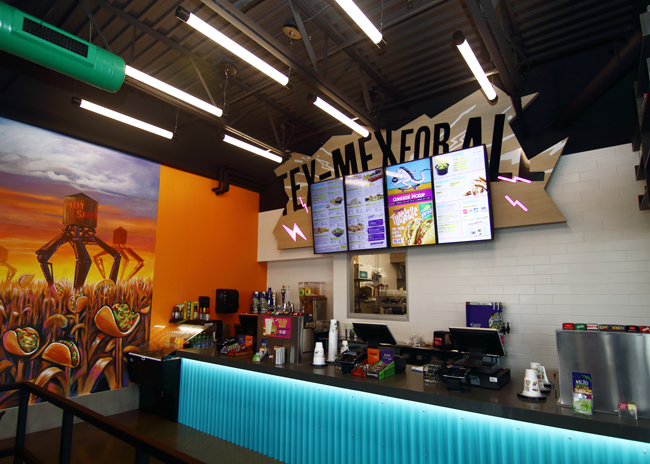
What was the impetus behind this new prototype? And where did you step into the process?
ET: It was contemplated before I came on board. They had renderings, but it was a matter of fitting it into a budget. The first one opened in Noblesville, Ind., and that was a franchised unit. Our first company store will open in Ocoee, Fla., in March. Tijuana Flats has always been a successful brand, but it’s a 25-year-old brand, so the stores didn’t have any tech package. With fast-casual restaurants nowadays you have to have that.
We added digital menu boards and a kitchen display system in the back of the house. We added a to-go and third-party delivery pickup area along with an order status board. Now, when you go into the restaurant, you just have to open the door, look at the status board, find out which window the order’s in, grab the food and go. The prototype stayed true to the beliefs of the Tijuana Flats brand with a bold design, but it’s got new furniture and a new graphics package.
We have a lot of restaurants with patios already. And, in the past, we had several different looks but we decided with the remodels and the new prototype that we would settle on one outdoor furniture package and we bought plenty of it, so we’d have it for the system. The whole outdoor furniture and fixtures package for the new stores are set.
Did the prototype affect the back of house? And did all the increased tech change throughput?
ET: Yes, it’s completely redesigned for efficiency. We can do more sales per unit with this new design.
So, [before the pandemic] we had third-party delivery, but we partnered with more vendors and our sales via third-party apps doubled, basically. We were really ahead of the game and that’s a credit to our CEO Brian Wright. He saw COVID as a real threat back in January and February of 2020. When it came to the U.S., we had already increased our third-party delivery partnerships and we quickly rolled out curbside pickup, which is something that we had not had prior to the pandemic. We also sold items in the restaurant that were hard to get at the time, including toilet paper and paper towels. We were ready quickly.
What are the biggest challenges your team faces right now?
ET: It’s still COVID. We had a lot of momentum, and we still do, but it’s difficult to know what’s next for us until there’s an end in sight. We all set benchmarks. Last year, we all said, “It started in March, and it will be over in June.” And then it was the end of the year, and now people are saying it will be this June. It’s hard for franchisees. A lot of them can see a strong future and know it’s time to take advantage of this moment but are still cautious. They have to have a better vision of what the future holds. That’s probably our biggest obstacle. We have a nice pipeline, but there’s a lot of folks waiting and holding back until they feel they have more clarity.
Did you have any trouble getting buy-in from the remodels or new prototype from franchisees?
ET: We have seven franchise groups, and three were up for renewal in the last year. All renewed and all opted for the new prototype remodel with the new technology package. A lot of them have been in this system for a long time. They understand their stores need new technology. You’ve got to have digital menu boards and things like that to be competitive today.
Going forward, we have a designer, a general contractor and a director of construction. We have a good team of folks to help make these decisions. We want all the latest and greatest bells and whistles, but we also have to keep it within a certain budget. We are constantly looking at how we can upgrade without spending more money. How do we get better equipment, better furniture, etc. We’re willing to spend where it matters, however. So, the tabletops we’re using are real butcherblock. They’re beautiful, with lasered images on them. We felt like the furniture was worth the spend.
What are some longer-term goals for Tijuana Flats?
ET: One of the biggest initiatives was to remodel one company store per month, and that’s back on track as of February. We’ve been very proactive, and we’ve tried to not let COVID slow us down. So, the remodels are on. My franchise development budget is what we established it would be, so we’re on track.
As for the future, it’s a 25-year-old brand with roughly 125 stores right now, but when you look at how fast the pipeline is filling with strong franchisee candidates, you can see how fast we can grow. And, potentially, by 2022 we’ll be opening 10 franchise stores a year plus 5 to 6 company owned. And then 20 stores a year. So, five years from now, we could double our store count, with more in the pipeline.
Additionally, I have a lot of nontraditional experience, and I can see this prototype being brought down to 1,800 square feet and becoming a nontraditional powerhouse operation, with locations in airports and certain shopping centers. We’ve already had inquiries from military bases. The only thing slowing us down on that front is COVID. We had planned to move into airports last year, for example.
Another thing we’re trying to do — in Tampa, Orlando and Jacksonville — is to own our backyard. That’s one of the reasons for the sponsorship deals at Florida State University and the University of Florida. You’re going to start seeing us in many more nontraditional venues in Florida. We’re going to step it up from a brand positioning point of view.
We’ll continue to open company-owned stores in Florida, but everything outside of that we’ll do as franchise stores.

